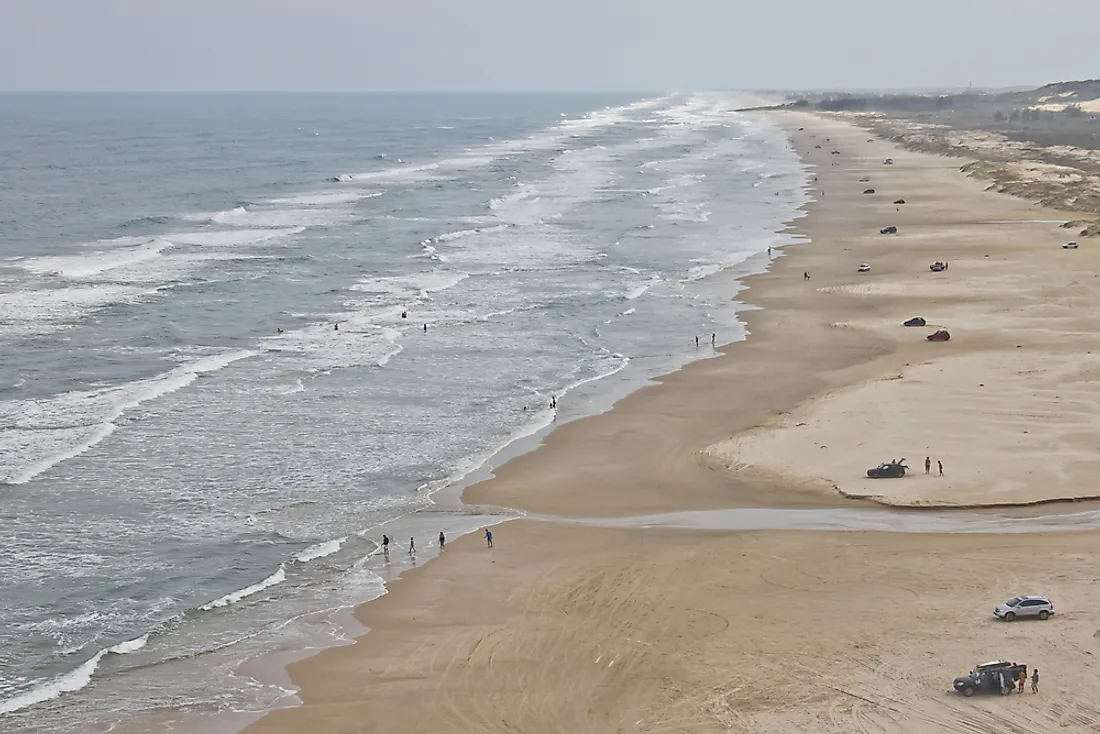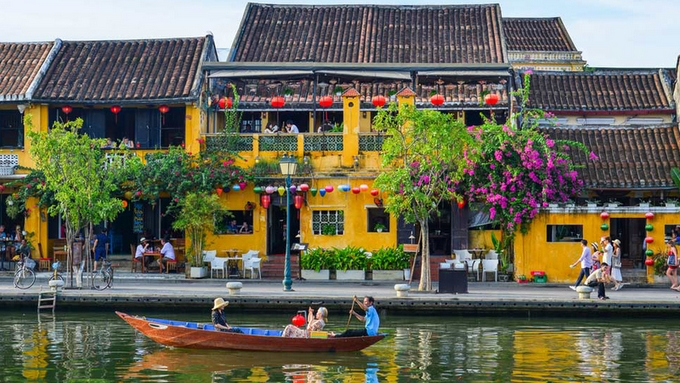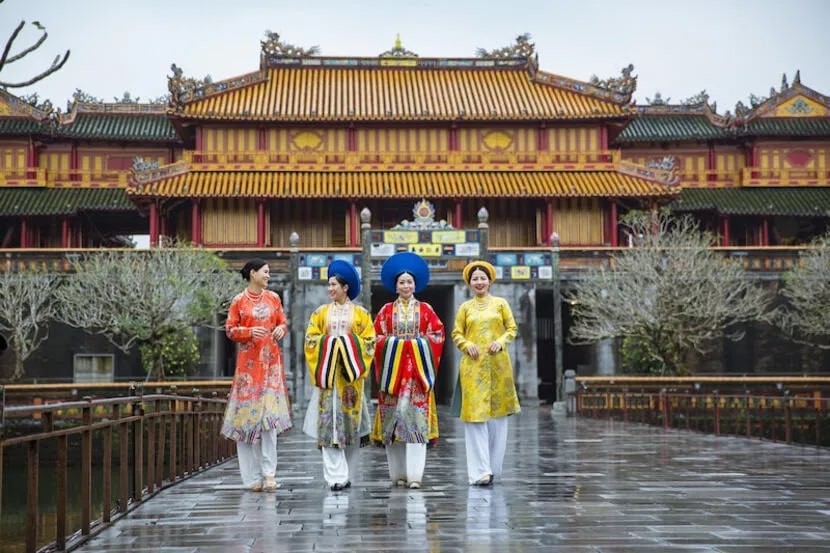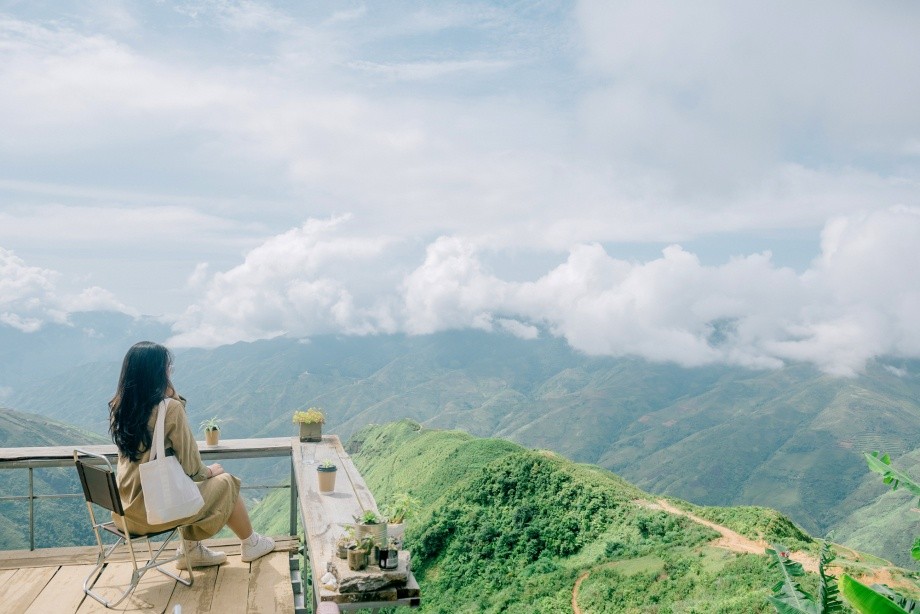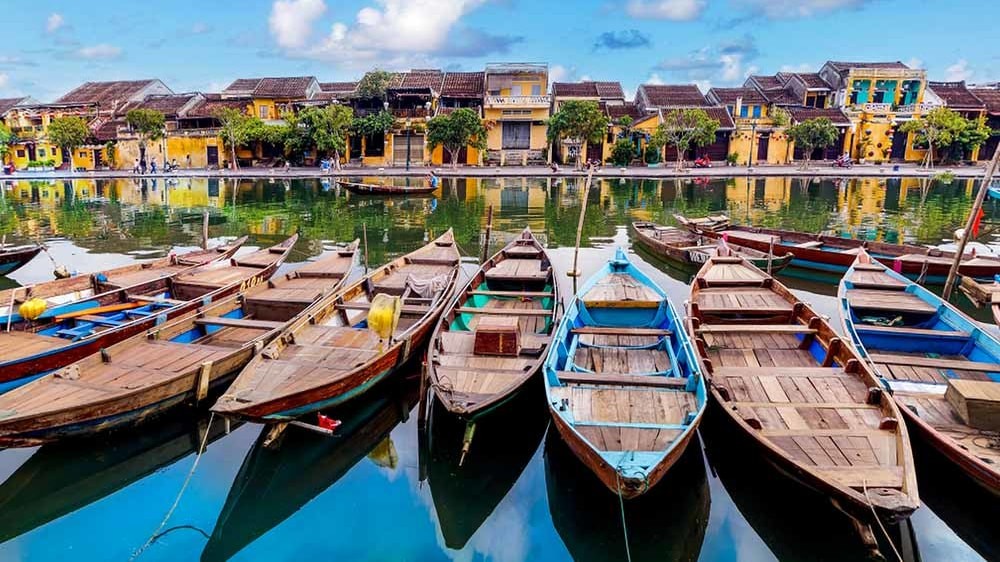Top 10 Best Treks In The World For Adventurous Travellers To Discover
| Top 10 Longest Beaches in the World | |
| Vietnam In Top 10 Emerging Markets For Global Data Centres | |
| Hoi An named Among Top 10 Picturesque Car-free Cities Globally - Video |
Ask experienced hikers for the best trek in the world and each will give you a different answer. But among the heated debates, there are a couple of famous walking trails that always tend to crop up.
These 10 classic long distance hikes are amongst the best on the planet; all of them require a sturdy pair of lungs, fit legs and a good amount of preparation. But the reward is an experience that lasts a lifetime.
1. GR20, France
There are several ways to react when a friend suggests you take on something described as "Europe's hardest long-distance trek". A straightforward refusal, for example, or a plucky pledge to give it a try once you've trained sufficiently – say, for five years. It takes a particular mix of ignorance and bravado to instead shrug a shoulder and nonchalantly ask: "How bad can it really be?"
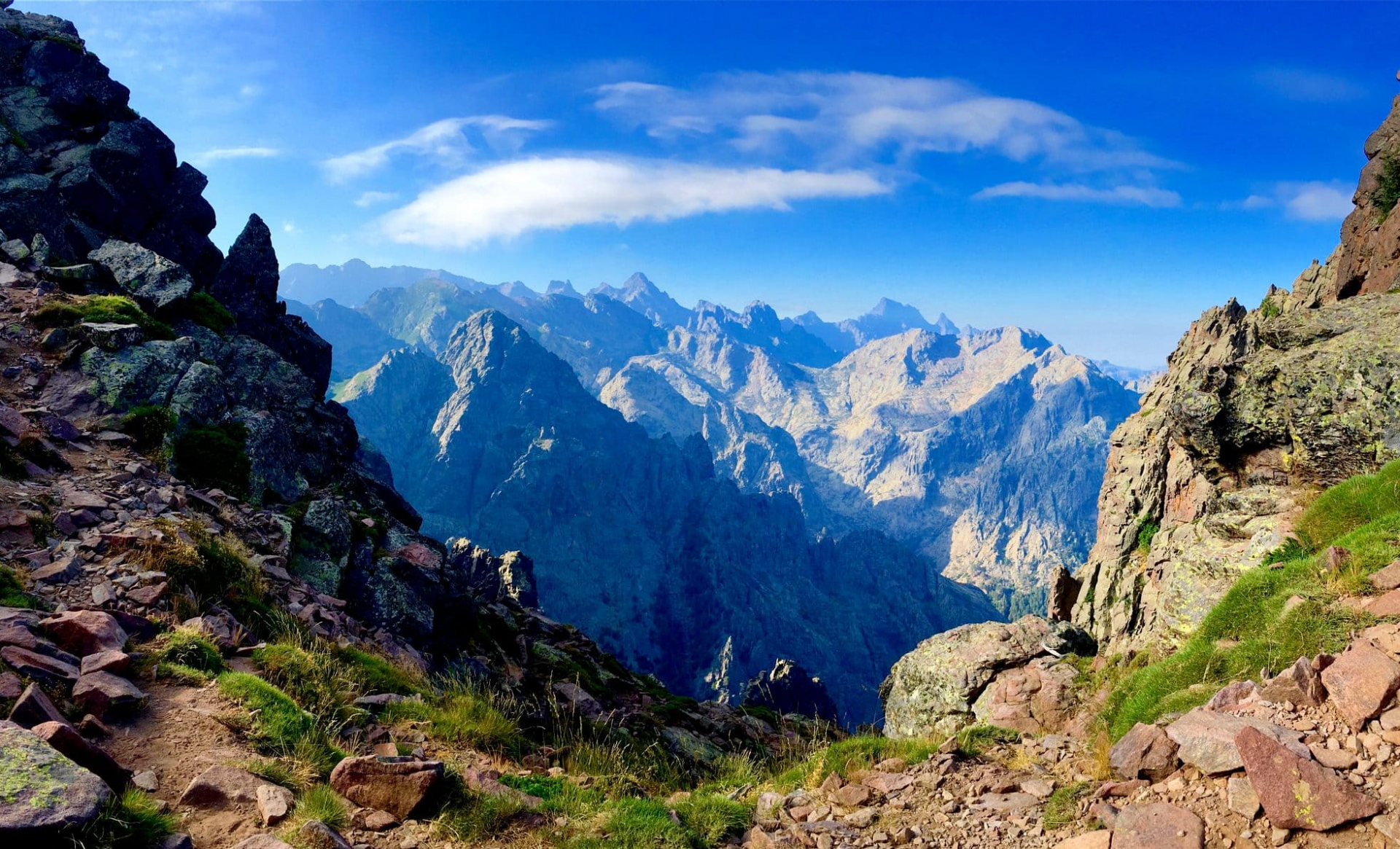 |
| Photo: The Natural Adventure Company |
One hundred and seventy kilometres traversing Corsica's steepling spine. Nineteen thousand metres of ascent and descent. Fifteen days walking for a minimum of six hours a day. These numbers seemed abstract when we decided to take on the Grande Randonnée (GR) 20. To men of greater trekking experience – the sort who wouldn't have had to borrow their rucksacks off mates, or then filled them with iPod chargers and beach towels rather than freeze-dried spaghetti and crampons – they would have served as a dread warning of what was to come.
The GR20 – or "Jhay Air Vang", as the locals pronounce it – does not mess about. From the very first step it climbs at a dizzying rate, through dense maquis forest and then larico pines, past shepherds' huts and hoofprints left by wild boar, up through the wispy coastal clouds and away into the silent, mountainous interior.
In winter it's impassable with snow, in high summer sweltering, which is why insiders recommend late June and early September. And while it's possible to split it in half and do just the north or south sections, the traditional route cuts from Calenzana in the north-west, a 10-minute taxi ride from Calvi, all the way across to Conca in the south-east, returning via dusty bus two weeks later.
2. Inca Trail, Peru
The Inca Trail to Machu Picchu (also known as Camino Inca or Camino Inka) is a hiking trail in Peru that terminates at Machu Picchu. It consists of three overlapping trails: Mollepata, Classic, and One Day. Mollepata is the longest of the three routes with the highest mountain pass and intersects with the Classic route before crossing Warmiwañusqa ("dead woman"). Located in the Andes mountain range, the trail passes through several types of Andean environments including cloud forest and alpine tundra. Settlements, tunnels, and many Incan ruins are located along the trail before ending the terminus at the Sun Gate on Machu Picchu mountain. The two longer routes require an ascent to beyond 4,200 metres (13,800 ft) above sea level, which can result in altitude sickness.
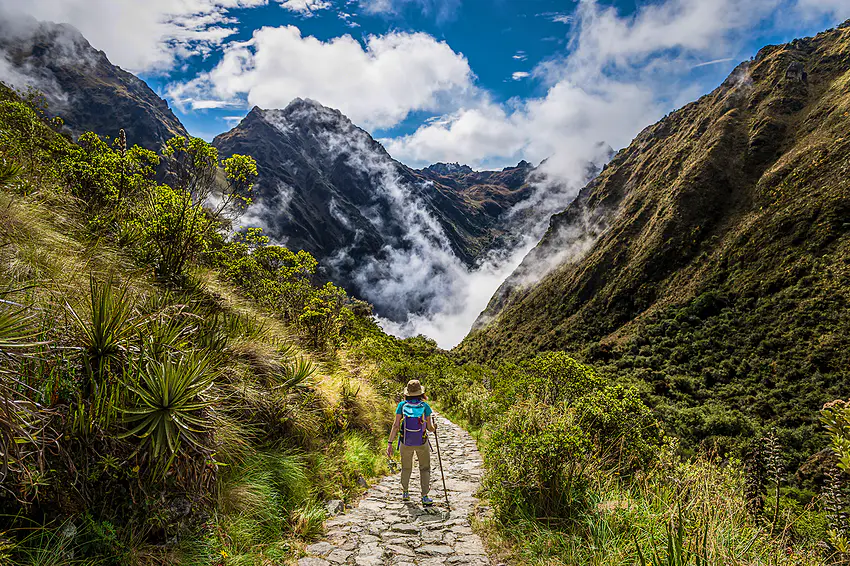 |
| Photo: Lonely Planet |
Concern about overuse leading to erosion has led the Peruvian government to place a limit on the number of people who may hike this trail per season, and to sharply limit the companies that can provide guides. As a result, advance booking is mandatory. A maximum of 500 people are allowed on the trail each day, of which only 200 are trekkers, the rest being guides and porters. As a result, the high season books out very quickly.
The trail is closed every February for cleaning. This was originally done informally by organizations such as South American Explorers, but is now managed officially.
3. Pays Dogon, Mali
A UNESCO World Heritage Site, the Pays Dogon is known for its isolated villages located on cliffs rising to a height of almost 500m. The trek in Pays Dogon takes trekkers across the small villages of the region and also through the culture of the people. Highlight of the Trek The main highlight of the trek is the Bandiagara Escarpment which is about 500m high and stretches over 150Km of cliffs. The trek through the Pays Dogon can be arranged in cities of Mopti, Sevare, or Bandiagara and the trips can last from one day to several weeks.
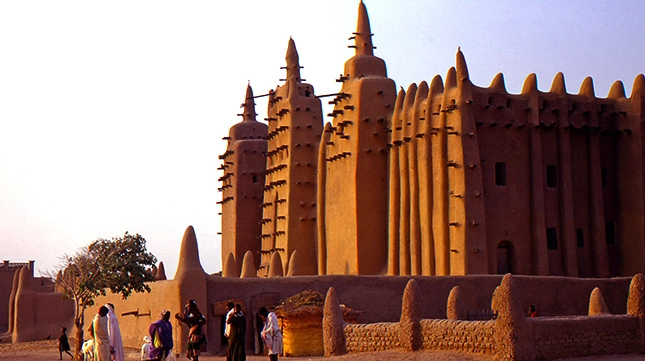 |
| Photo: Halal Trip |
Not far from Bandiagara is the village of Songo known for its culture and people. After crossing the plateau and the canyon from the Songo village visitors will come across the lush green onion fields. The hike continues into the different villages of the Dogon Country. All around the villages, tourists can see small mud huts covered with conical tops made from thatch.
At the high points of the cliffs are the Tellem Houses in shape of caves. Camping facilities and hotels are available in the main villages. Food is also available across the Dogon Country area ad is mainly made from millet. The locals have excellent carving skills and throughout the trek, you can see carved doors and windows.
Local guides are available who can take you around the Dogon villages and give you an insight into the lifestyle of the local people.
4. Everest Base Camp, Nepal
The Everest Base Camp trek is on many travellers’ bucket lists, and for good reason. The there-and-back route takes adventurous trekkers to the foot of Mount Everest (called Sagamartha in Nepali and Chomolungma in Tibetan), which is the highest mountain on earth.
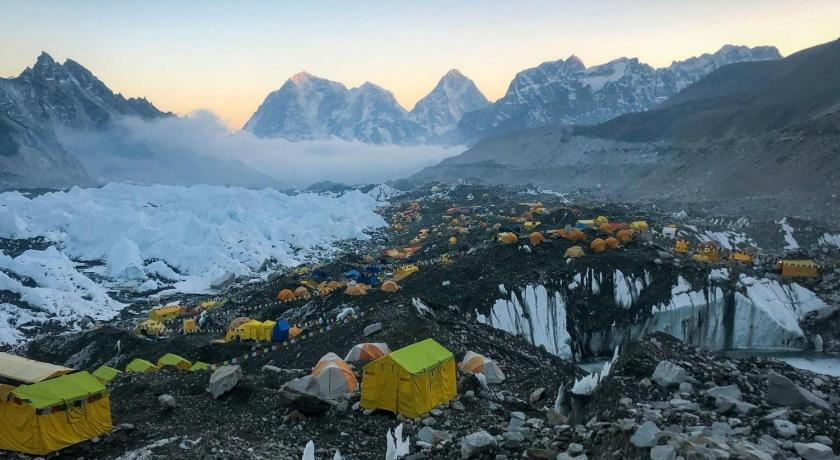 |
| Photo: HikersBay |
To actually reach the summit of Mount Everest is a legendary feat, which demands huge sacrifices. At 5,600 meters, Base Camp is no joke, but it does offer a much more achievable goal for people from all walks of life, who still want a glimpse of the world’s highest peak.
In fact, the Everest Base Camp trek has become so well-known that there has been controversy in recent years about trekker “traffic jams,” littering, and potential limits on numbers of trekkers permitted per year.
Aside from breathtaking scenery, travellers to the region can experience unique local culture by visiting monasteries, connecting with local guides and teahouse owners, and admiring Buddhist stupas and mani stones along the way.
5. Indian Himalayas, India
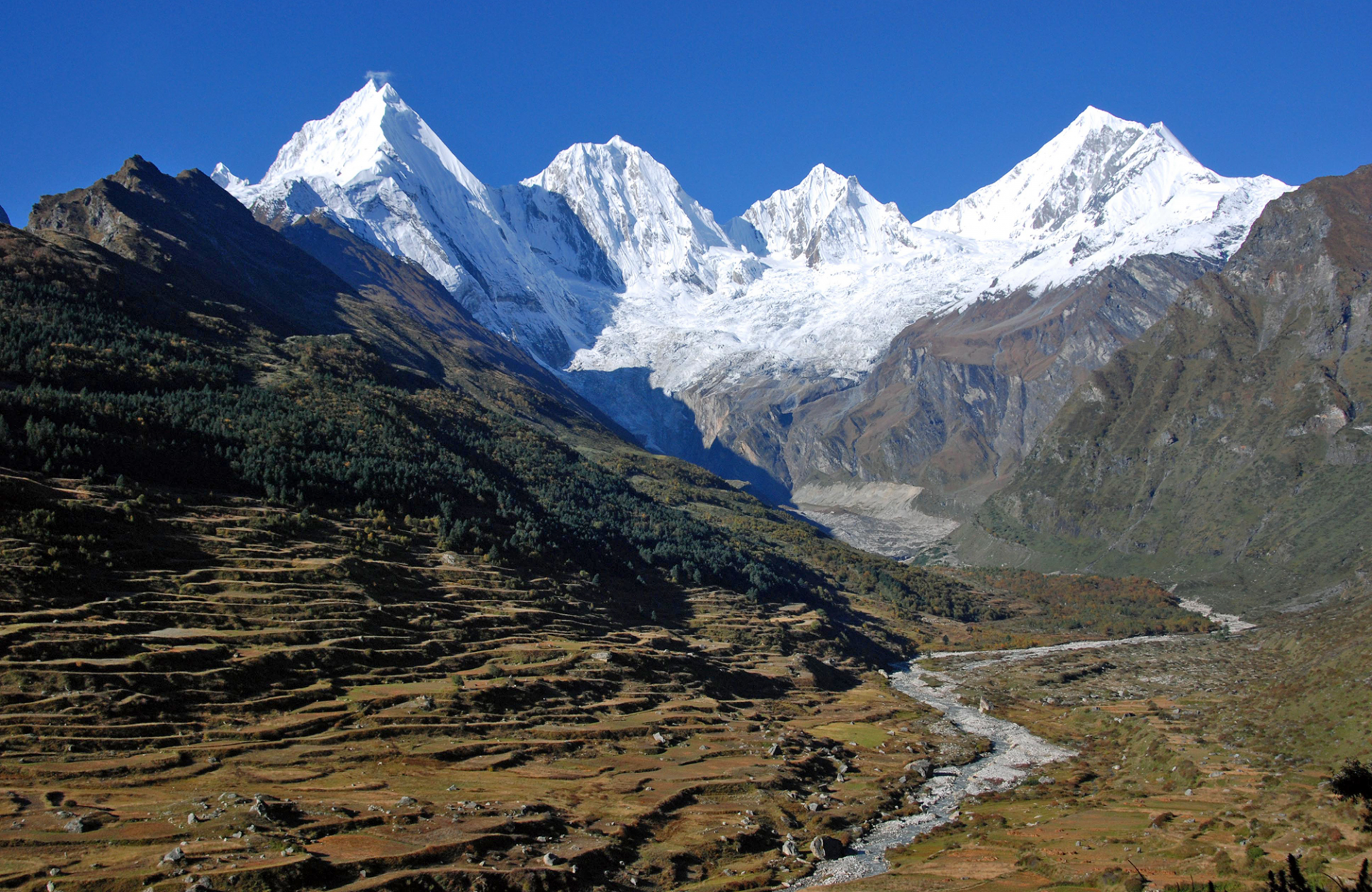 |
| Photo: Getty Images |
Fewer folk trek on the Indian side of the world’s greatest mountain range. So, if isolation’s your thing try trekking in Himachal Pradesh. Hardcore hikers can try teetering along the mountain tops for 24 days from Spiti to Ladakh. This extremely remote and challenging walk follows ancient trade routes. The bleak high-altitude desert terrain inspired Rudyard Kipling to exclaim, "Surely the gods live here; this is no place for men".
6. Routeburn Track, New Zealand
The Routeburn Track is a world-renowned, 32 km tramping (hiking) track found in the South Island of New Zealand. The track can be done in either direction, starting on the Queenstown side of the Southern Alps, at the northern end of Lake Wakatipu or on the Te Anau side, at the Divide, several kilometres from the Homer Tunnel to Milford Sound.
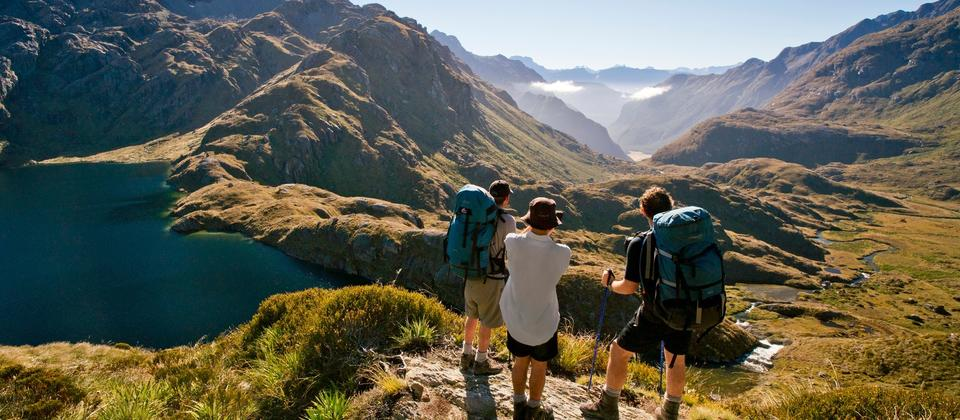 |
| Photo: New Zealand |
The New Zealand Department of Conservation classifies this track as a Great Walk and maintains three huts along the track: Routeburn Flats Hut, Routeburn Falls Hut, and Lake Mackenzie Hut; in addition there is an emergency shelter at Harris Saddle. The track overlaps two National Parks; the Mount Aspiring National Park and Fiordland National Parks with the border and highest point being the Harris Saddle. There is access to another tramping area called the Greenstone and Caples Tracks from Lake Howden near The Divide.
This area gets much less rain than the Milford Sound, and the forests are very different, especially on the eastern side of the saddle, which due to less rainfall is predominantly made up of New Zealand red beech and mountain beech, with relatively few ferns. The track spends a long time on the high ridges around Harris Saddle, with great long-distance views in many directions. The track has a long history of use dating back to the 1880s.
7. Overland Track, Australia
The Overland Track is Australia's premier alpine walk. This exhilarating and life-changing journey attracts walkers from across the globe. Beginning at the iconic Cradle Mountain and ending at Australia’s deepest lake – Lake St Clair, this 65 kilometre, six-day trek takes you through the heart of the Cradle Mountain-Lake St Clair National Park, part of the magnificent Tasmanian Wilderness World Heritage Area.
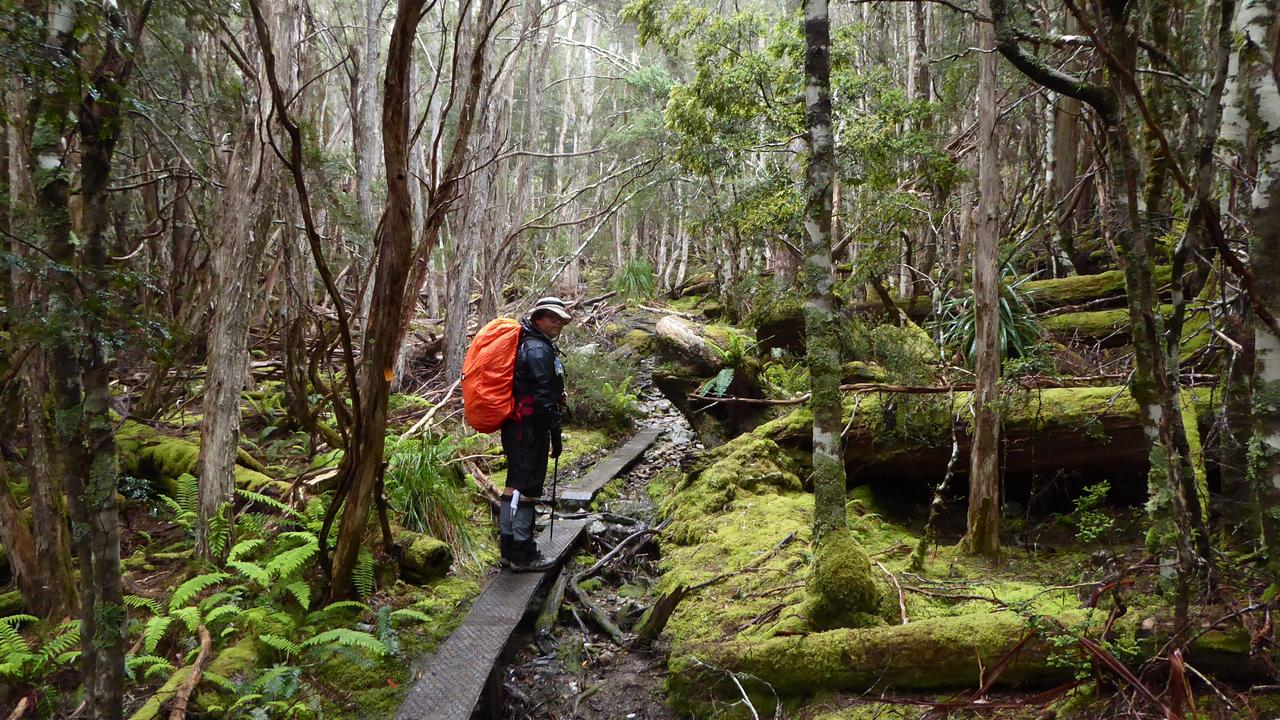 |
| Photo: Blog |
Your journey will be physically demanding, emotionally challenging and scenically spectacular. This is a landscape of glacially carved valleys, ancient rainforests, fragrant eucalypt forests, golden buttongrass moorlands and beautiful alpine meadows. Optional side-trips take you to cascading waterfalls and mountain summits, including Tasmania’s highest peak, Mount Ossa (1617 m).
The Overland Track is about you and your time in the wilderness, so while six days is the average time taken to walk the track, you can create your own pace depending on how many rest days or side-trips you wish to enjoy.
Most walkers finish their journey at Narcissus Hut at the head of Lake St Clair where they board a small privately run ferry (prior booking required) to reach the Lake St Clair Visitor Centre at Cynthia Bay. Or you might choose to walk the 17.5 km length of the lake through rainforest to the visitor centre, extending your journey by a day.
8. The Narrows, USA
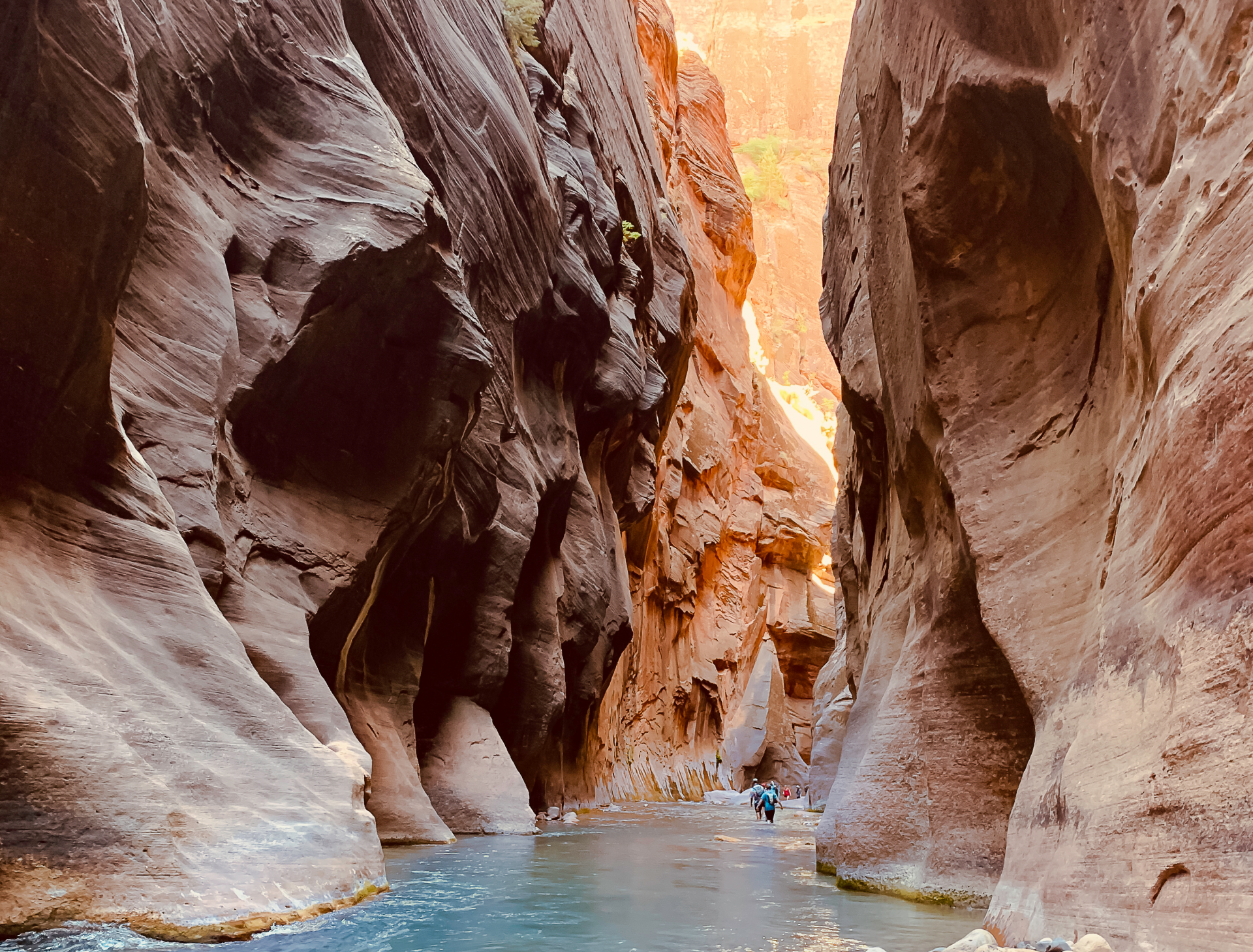 |
| Photo: Getty Images |
The Narrows is the narrowest section of Zion Canyon. This gorge, with walls a thousand feet tall and the river sometimes just twenty to thirty feet wide, is one of the most popular areas in Zion National Park. You can see The Narrows by hiking along the paved, wheelchair accessible Riverside Walk for one mile from the Temple of Sinawava. If you wish to see more, you will be walking in the Virgin River. This can involve wading upstream for just a few minutes or it can be an all day hike.
A hike through The Narrows requires hiking in the Virgin River. You must get your feet wet since there is no trail. Most people choose to start their hike from the Temple of Sinawava via the Riverside Walk and then walk upstream before turning around and hiking back down to the Temple of Sinawava.
9. The Haute Route, France-Switzerland
The Haute Route is a spectacular and demanding summer hike: a strenuous high-level traverse in the French and Swiss Alps, walking from Chamonix (France) to Zermatt (Switzerland) in 10 to 12 days.
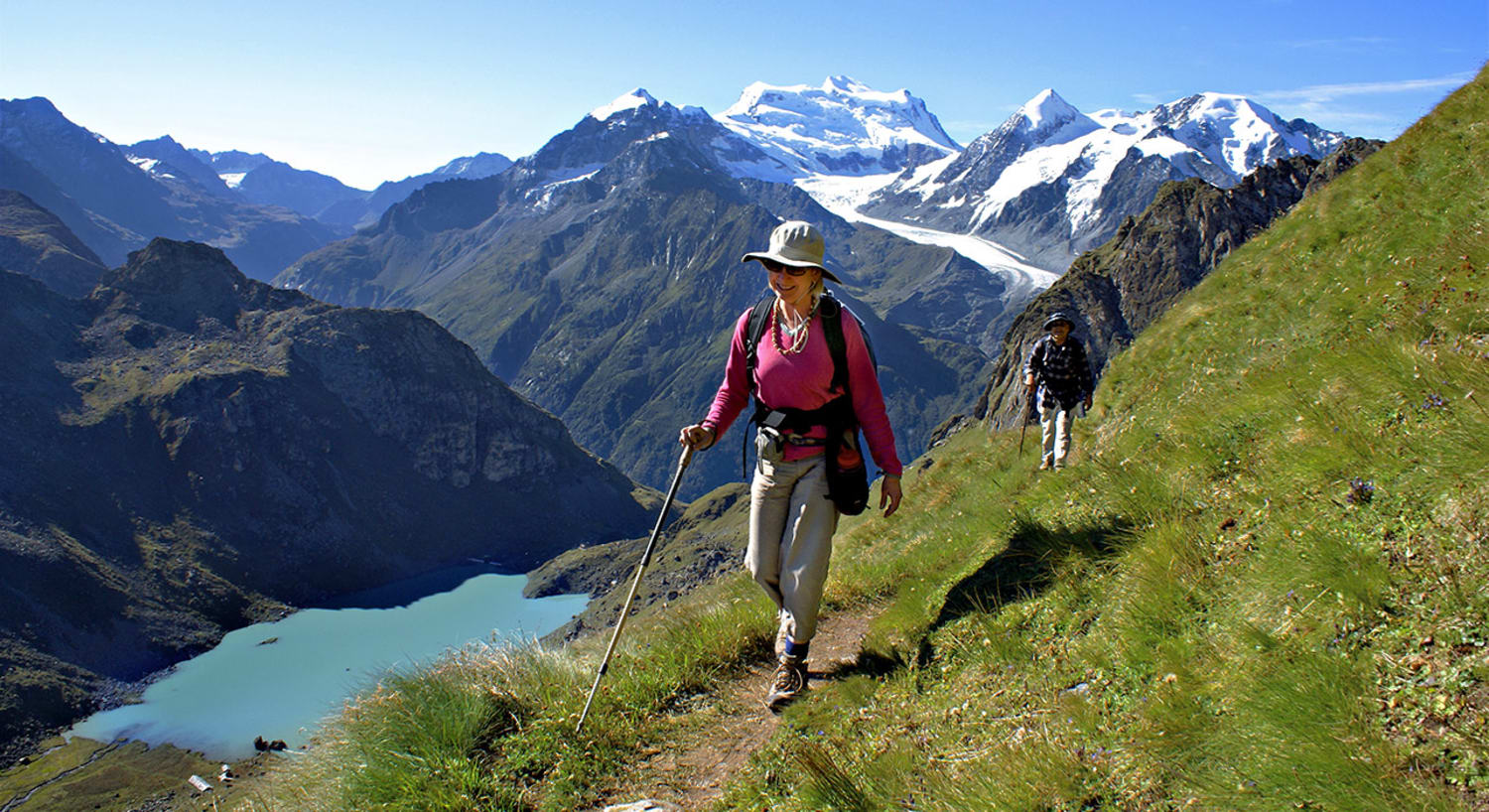 |
| Photo: Wilderness Travel |
The route traverses below the summits of 10 out of the 12 of the highest peaks in the Alps, and crosses several high passes. The highest pass is at 2964 m (9,800 ft).
This is a world of glaciers and towering, snow-capped peaks. The Haute Route also meanders through green alpine valleys with flower-covered meadows and picture-book villages. This is a trek of contrasts.
The route passes through the centre of both the French and Swiss Alps: two distinct cultural regions with different languages and architecture.
The Haute Route Chamonix to Zermatt is a remote trek. Take a tent, or sleep in a mountain hut or a refuge. One or two nights could be spent in valley hotels to catch up on hot showers.
In general, mountain huts and refuges are open from mid-June until the first or second week in September. It is advisable to reserve a bed, particularly in the high season of mid July to mid August.
The early season (June-mid July) is the quietest and most beautiful but beware of old snow on the higher paths which could be icy and dangerous and would make crampons and ice axe essential.
10. Baltoro Glacier & K2, Pakistan
This corridor of ice leads to the colossal peak of K2 (8,611m, 28,251ft), the world’s second-highest mountain. This incomparable trek in Pakistan traverses some of the most humbling scenery on the planet. What starts with a trail following icy rivers into the guts of the Baltoro Glacier transforms into a path to the granite pyramidal mountains, including Paiju (6,610m, 21,686ft), Uli Biaho (6,417m, 21,053ft), Great Trango Tower (6,286m, 20,623ft) and ultimately K2. If the 15 days doesn’t floor you, take amazing side trips to more moraine-covered glaciers. It's worth noting that treks here have to be organised with a registered tour operator. Additionally, the Foreign Office currently advises against travel to many parts of Pakistan. See our full guide here.
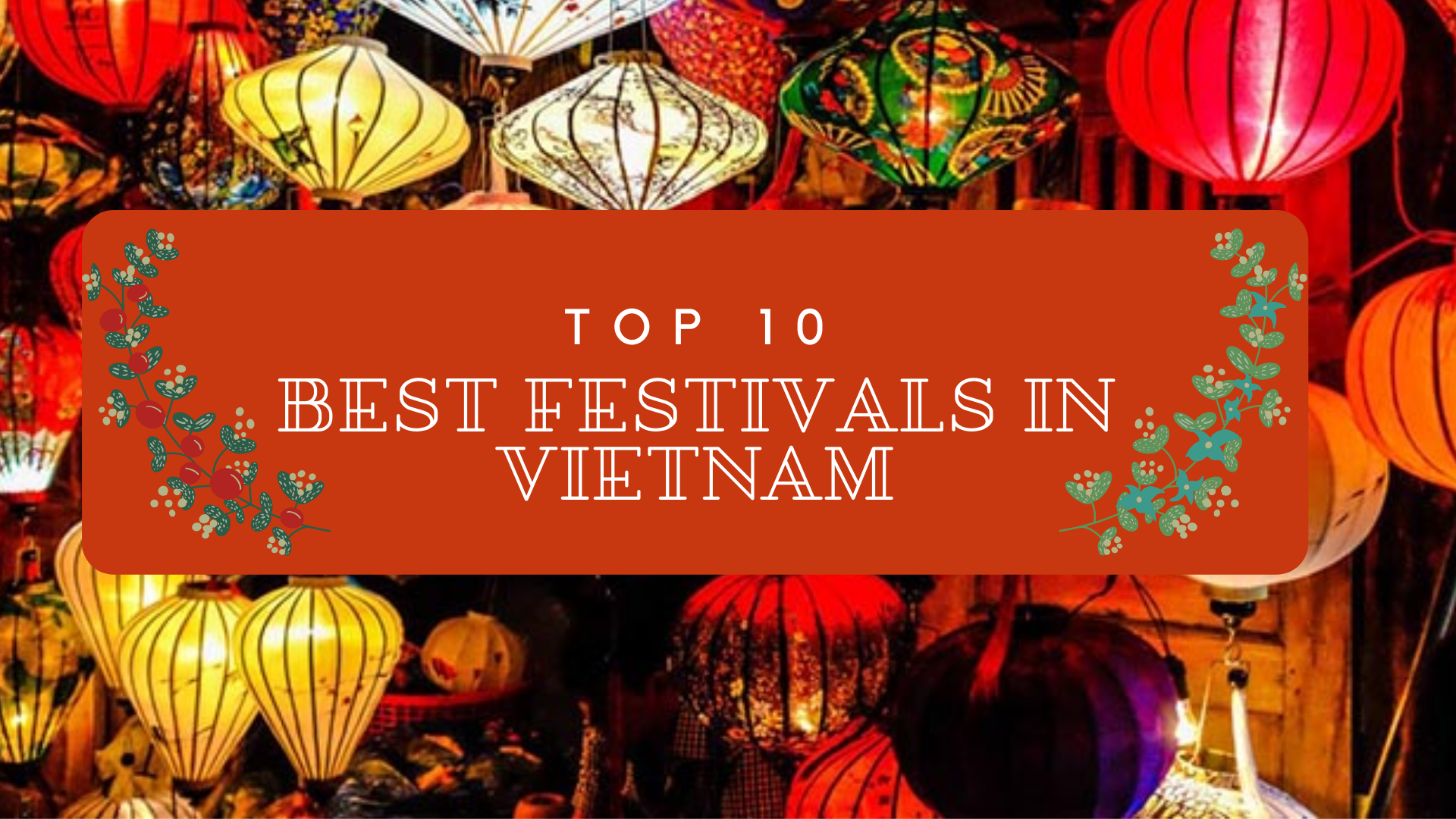 | Top 10 Most Popular Festivals and Holidays in Vietnam Festivals in Vietnam offer visitors the best opportunity for discovering interesting facts and events of rich culture. Here is our list of top 10 popular ... |
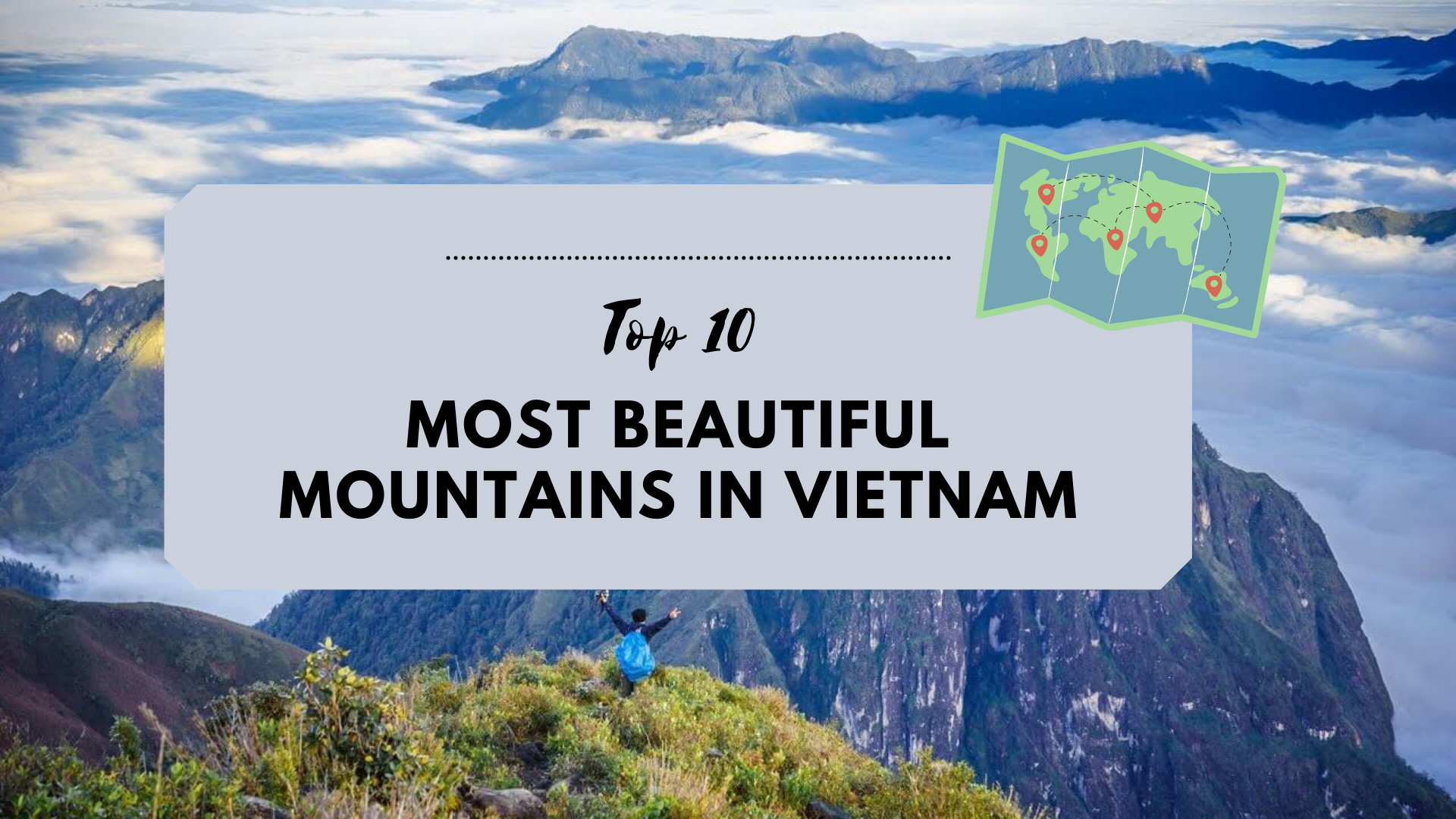 | Top 10 most beautiful mountains in Vietnam Vietnam is the land of natural beauty, including mountains, forests and rivers. Here is our list of top 10 most beautiful mountains in Vietnam that ... |
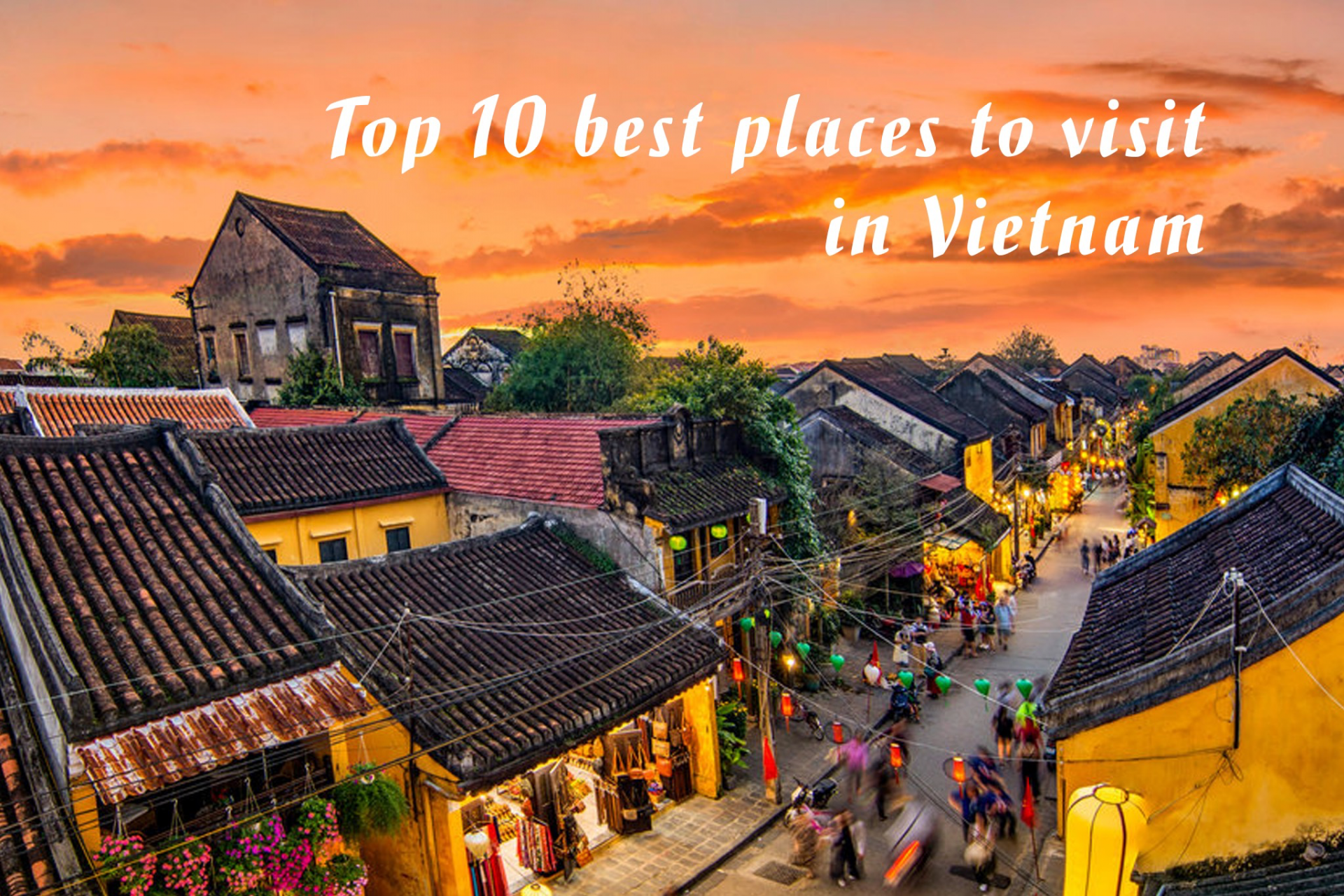 | Top 10 Best Places to Visit in Vietnam - Video You want to visit Vietnam, but you have no idea where to see first. Then, this article will help you. Take a look at the ... |
Recommended
 World
World
Pakistan NCRC report explores emerging child rights issues
 World
World
"India has right to defend herself against terror," says German Foreign Minister, endorses Op Sindoor
 World
World
‘We stand with India’: Japan, UAE back New Delhi over its global outreach against terror
 World
World
'Action Was Entirely Justifiable': Former US NSA John Bolton Backs India's Right After Pahalgam Attack
Popular article
 World
World
US, China Conclude Trade Talks with Positive Outcome
 World
World
Nifty, Sensex jumped more than 2% in opening as India-Pakistan tensions ease
 World
World
Easing of US-China Tariffs: Markets React Positively, Experts Remain Cautious
 World
World

